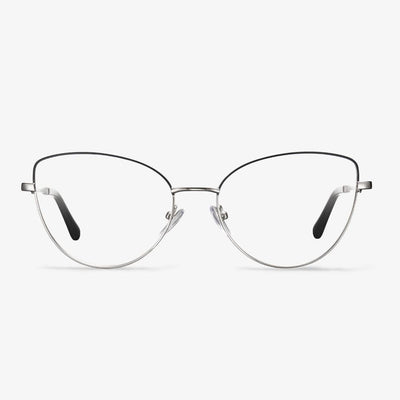Advantages Of Acetate Frames
- Firmness and good gloss. The style is beautiful. It is not easy to be deformed and discolored, and it is durable.
- It is not easy to be corroded by the sweat of the skin and other irritants, and it will not be discolored by ultraviolet radiation.
- Diverse styles, various colors, suitable for many types of people, and easy to match clothes.
Polygonal eyeglasses
Polygonal eyeglasses are a popular trend in recent years, showing the strong self of the personality trend and an interesting personality. Because the shape is unique, unlike ordinary square glasses frame, it can subtly shift the focus, so that the face is more perfect, very suitable for the confident man who can calmly face other people's eyes. Basically, the geometric frame is a stylish and versatile one. Men with small, wide eyes are particularly recommended to try this playful frame to create a larger, narrower eye distance effect.
Do blue light glasses really protect your eyes?
Scientists at the University of Kansas in the United States summarized the results of studies around the world in the past 30 years and pointed out that there is not enough evidence in human trials to prove that blue light is related to macular degeneration, and there is no test showing that blocking blue light glasses are related to macular degeneration. Moreover, experts from the University of S?o Paulo in Brazil have observed after five years that patients who use anti-blue light intraocular lenses after cataract surgery have no difference in the incidence of macular disease compared with those who use ordinary intraocular lenses.
What are bifocals?
A bifocal lens is a lens with two focal points. Because of the imaging principle of the lens, even half of the lens can still present a complete image, and the two images do not interfere with each other. In the past, both short-sighted glasses and presbyopia glasses were called single-focal lenses, which had only one focus. Later it developed to the bifocal lens, and the same lens is divided into upper and lower two parts. The upper part of that lens is used when seeing far, and you look down when seeing close objects, just the reading distance, naturally used the second half.
Evolution of hard coating technology
The first generation of the use of hard coating technology began in the early 1970s, the quartz material is deposited on the surface of a resin lens under vacuum conditions, form a very hard anti-wear film. However, due to the mismatch between the thermal expansion coefficient and the film base material, it is easy to delaminate and crack the film. Instead, it forms the mottle on the surface of the lens, and the effect is not optimal.
The second generation of hard coating technology is the use of the 1980s. The surface of the resin sheet is coated with a material with high hardness and not easy to be brittle and cracked by an immersion process. At this time, anti-reflection coating lenses had appeared and gained the recognition of consumers, but the mismatch between adding hard coating and anti-reflection coating still caused serious lens wear.
The third generation of hard coating technology was developed in the 1990s, mainly in order to solve the problem of wear resistance after coating resin lenses with an anti-reflection film. The hardened material evolved into a polymer organic matrix material.
Fourth-generation coating technology is dominated by silicon atoms, in which the hardened solution contains both organic substrates. It contains inorganic ultrafine particles, including silicon elements, which make the hard coating not only tough but also hard.
Who are suitable for progressive lenses?
A progressive piece is suitable for most old people to wear. The proper person is the one who has the visual needs of the long, medium and short distance cares about beauty, and is willing to accept new things. In order to avoid binocular vertical prism differences, for the wearer whose equivalent spherical lens with anisometropia is more than 2D, especially if the difference in refractive power of the vertical meridian is more than 2D, it should be checked with caution. Opticians whose vision needs do not match the progressive lens design, like dentists, often experience blurred vision when working with the far side of the lens to look closer.
The nose pad
When you're shopping for a driver's glasses, you can't ignore a nose pad. Choose one that is soft and elastic. This way, it won't make your noses feel depressed or uncomfortable.


















































